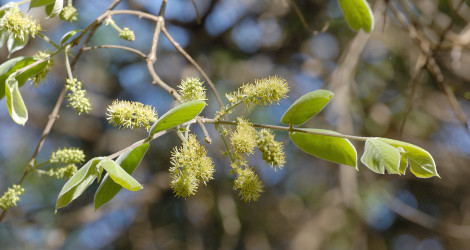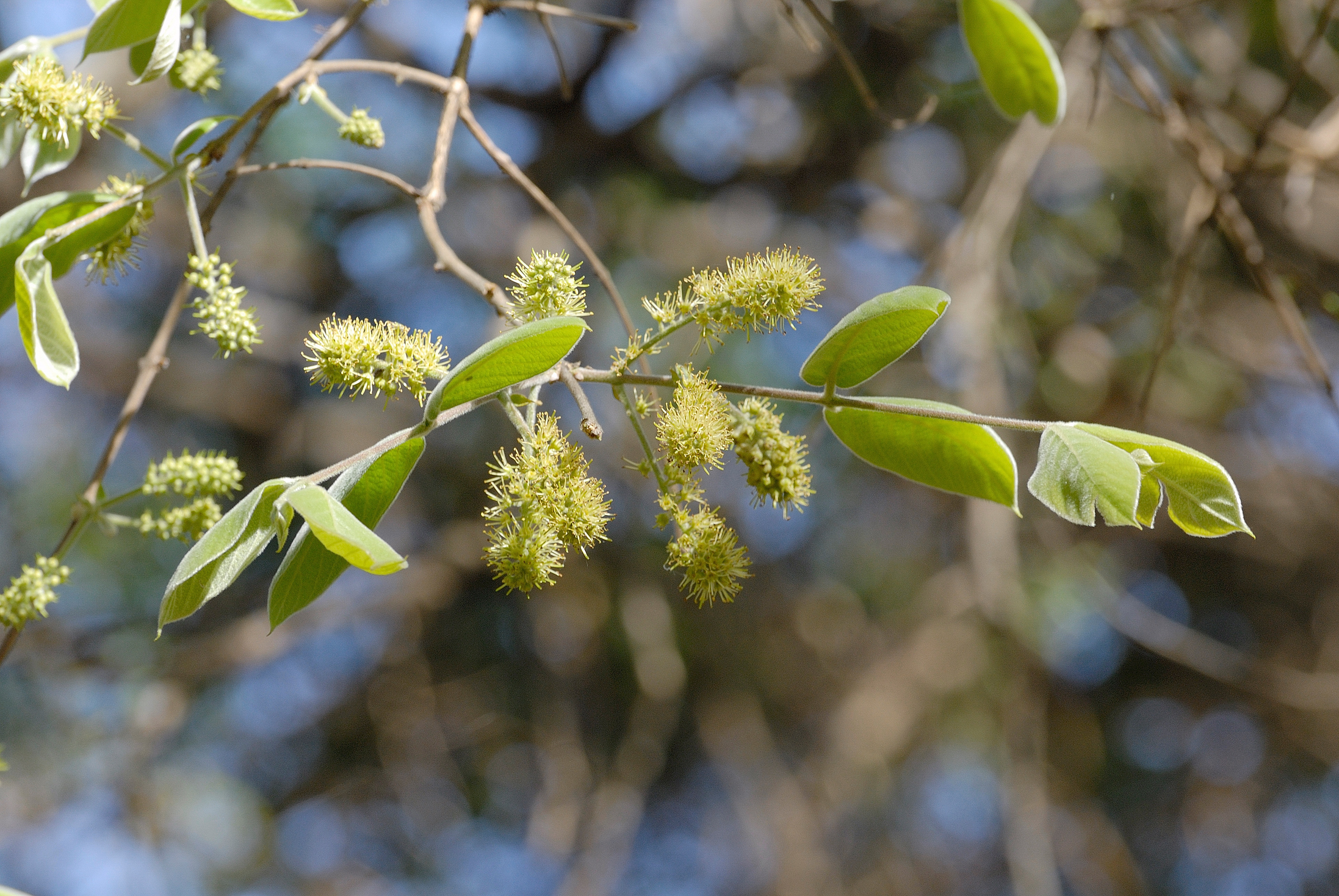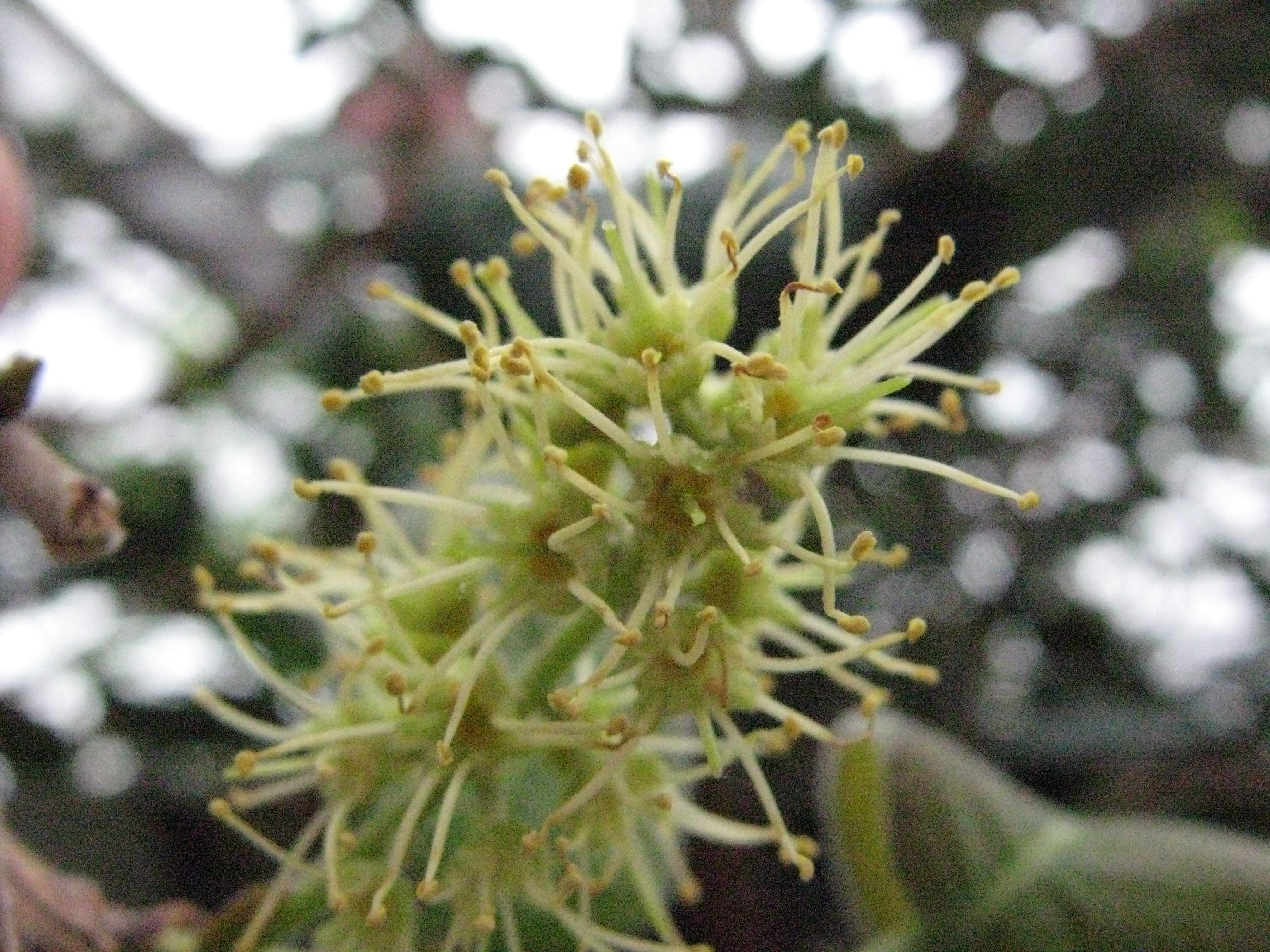Accession Data
Combretum molle
Common Name: Velvet Bush Willow
Family: Combretaceae
Country of Origin: Africa
Description: Combretum molle is a shrub or small, graceful, deciduous tree 3-13 m high; trunk crooked or leaning, occasionally swollen at the base, up to 30 cm in diameter. Bark grey and smooth when young, grey-brown to almost black, rough and flaking when older, twigs often with reddish hairs. Branching heavy and drooping, giving a rounded or flat-rounded, sometimes oval, crown. It may be evergreen or deciduous and yields a gum. Leaves opposite, simple, leathery, 5-17 cm long, 2.5-9 cm wide, narrowly elliptic, broadly ovate-elliptic to almost circular, with dense, grey, velvety hairs on both sides, especially below; some forms almost without hairs; margins untoothed; apex tapering, often with a short point or sometimes notched; base round, heart-shaped or slightly narrowed; divided by midrib into 2 unequal parts; margin entire; petiole thickset, 2-3 mm long; net-veining conspicuous, especially on the under surface. Individual flowers small, on bare branches; pale cream or greenish-yellow, sometimes with a reddish tinge; heavily scented, borne singly in the axils of the leaves; in dense, axillary, often branched spikes, 4-9 cm long. The short-stalked flowers are borne on a central stalk 3-7 cm long. Bracts present. Fruits 1.4-2 (max. 2.5) x 1.5-2 cm; yellowish-green flushed with red, drying to golden reddish-brown; borne abundantly, some old fruits remaining on the tree into the next flowering season; 4-winged, the wings pale yellow-brown, rounded, with shallow notches at top and bottom. Combretum was the name given by Pliny to a particular climbing plant, the identity of which has been lost in time. The specific name is the Latin word ‘mollis’, meaning ‘soft’, presumably because of the softness of the leaves.
It is a tree of the bush and savannah regions of Africa generally, often occurring on ant-hills, in semi-evergreen thickets and frequently associated with quartzite formations.
Uses:
- MEDICINE: A root decoction is use to treat abdominal pains and sterility (Chhabra et al. 1984). It is used to treat hookworms, stomach pains, snakebites, leprosy fever, and general body swelling (Rulangaranga 1989). It is regarded as a medicine for both humans and animals. African remedies use this plant to treat guinea worm and treat the body of wounds, abscesses and many kinds of parasitic diseases.
- BEE PLANT: The sweetly scented flowers attract insects including honey bees.
- GENERAL PURPOSE WOOD The wood is hard and used as building posts, poles, tool handles, and in construction. It is also termite resistant.
Accession Data
Accession #: 199900553
Accession Date: 1999-09-30 00:00:00
Bloom Status: 🪴 Not Flowering
Location: 1105
Quantity: 1
Source: Lisa Palmer - Dartmouth
Culture: Well drained soils in forests. Slow growing, tolerates lopping and coppicing. Propagation by fresh seed or root suckers.
Classification
Division: Magnoliophyta
Class: Magnoliopsida
Subclass: rosids
Order: Myrtales
Family: Combretaceae
SubFamily: Combretoideae
Tribe: Combreteae
SubTribe: Combretinae
Flowering Data:
This accession has been observed in bloom on:| Year | Jan | Feb | Mar | Apr | May | Jun | Jul | Aug | Sep | Oct | Nov | Dec | ||||||||||||||||||||||||||||||||||||||||
|---|---|---|---|---|---|---|---|---|---|---|---|---|---|---|---|---|---|---|---|---|---|---|---|---|---|---|---|---|---|---|---|---|---|---|---|---|---|---|---|---|---|---|---|---|---|---|---|---|---|---|---|---|
| 2025 | ||||||||||||||||||||||||||||||||||||||||||||||||||||
| 2024 | ||||||||||||||||||||||||||||||||||||||||||||||||||||
| 2023 | ||||||||||||||||||||||||||||||||||||||||||||||||||||
| 2022 | ||||||||||||||||||||||||||||||||||||||||||||||||||||
| 2021 | ||||||||||||||||||||||||||||||||||||||||||||||||||||
| 2020 | ||||||||||||||||||||||||||||||||||||||||||||||||||||
| 2019 | ||||||||||||||||||||||||||||||||||||||||||||||||||||
| 2018 | ||||||||||||||||||||||||||||||||||||||||||||||||||||
| 2017 | ||||||||||||||||||||||||||||||||||||||||||||||||||||
| 2016 | ||||||||||||||||||||||||||||||||||||||||||||||||||||
| 2015 | ||||||||||||||||||||||||||||||||||||||||||||||||||||
| 2014 | ||||||||||||||||||||||||||||||||||||||||||||||||||||
| 2013 | ||||||||||||||||||||||||||||||||||||||||||||||||||||
| 2012 | ||||||||||||||||||||||||||||||||||||||||||||||||||||
| 2011 | ||||||||||||||||||||||||||||||||||||||||||||||||||||
| 2010 | ||||||||||||||||||||||||||||||||||||||||||||||||||||
| 2009 | ||||||||||||||||||||||||||||||||||||||||||||||||||||
| 2008 | ||||||||||||||||||||||||||||||||||||||||||||||||||||
References
- AgroForestryTree database. Accessed 31March2008.
- The Plant List (2013). Version 1.1. Last accessed on Saturday, January 28, 2017.
- Combretum molle at ARS-GRIN. Last accessed on Saturday, January 28, 2017.
- Combretum molle at FAO. Last accessed Wednesday, 31 October, 2018
- Iwu M., Maurice. Handbook of African Medicinal Plants. Boca Raton, Florida, CRC Press, 1993.
- Images #00 (cropped) & #01 (original) By Dr. Johann C. Knobel [GFDL or CC BY-SA 3.0 ], from Wikimedia Commons. Last accessed Wednesday, 07 November, 2018.
Images



